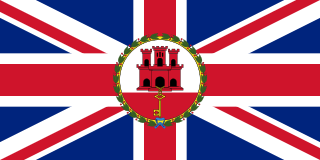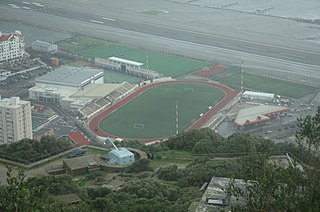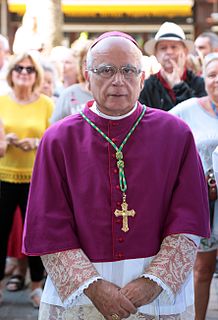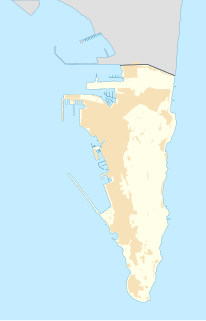 W
WThe following outline is provided as an overview of and topical guide to Gibraltar:
 W
WAn incomplete bibliography of Gibraltar:Abulafia, David (2011). The Great Sea: A Human History of the Mediterranean. London: Allen Lane. ISBN 978-0-7139-9934-1. Aldrich, Robert; Connell, John (1998). The Last Colonies. Cambridge University Press. ISBN 978-0-521-41461-6. Alexander, Marc (2008). Gibraltar: Conquered by No Enemy. Stroud, Glos: The History Press. ISBN 978-0-7509-3331-5. Andrews, Allen (1958). Proud Fortress: the fighting story of Gibraltar. London: Evans Bros. OCLC 656066535. Archer, Edward G. (2006). Gibraltar, Identity and Empire. London: Routledge. ISBN 978-0-415-34796-9. Ayala, Lopez de (1845). The History of Gibraltar from the earliest period. Translated by James Bell. London: Pickering. OCLC 28301900. Bradford, Ernle (1971). Gibraltar: The History of a Fortress. London: Rupert Hart-Davis. ISBN 0-246-64039-1. Collins, Roger (1998). Spain: an Oxford archaeological guide. Oxford: Oxford University Press. ISBN 978-0-19-285300-4. Cornwell, B. (1782). A Description of Gibraltar: with an account of the blockade, siege, the attempt by nine sail of fire ships, the sally made from the garrison, and every thing remarkable or worthy notice that has occurred in that place since the commencement of the Spanish war. London: Richardson & Urquhart. OCLC 28817404. Devenish, David (2003). Gibraltar before the British. OCLC 499242153. Fa, Darren; Finlayson, Clive (2006). The Fortifications of Gibraltar 1068–1945. Fortress 45. Oxford: Osprey Publishing. ISBN 978-1-84603-016-1. Ford, Richard (1855). The Handbook for Travellers in Spain, Part 1. London: J. Murray. OCLC 603580513. Gold, Peter (2012). Gibraltar: British or Spanish?. Routledge. ISBN 978-0-415-34795-2. S.H. (1986). Hastings, Max (ed.). The Oxford Book of Military Anecdotes. Oxford University Press. ISBN 0-19-214107-4. Haverty, Martin (1844). Wanderings in Spain in 1843, Volume 1. London: T. C. Newby. OCLC 56000559. Hills, George (1974). Rock of Contention: A history of Gibraltar. London: Robert Hale & Company. ISBN 0-7091-4352-4. Jackson, William G. F. (1986). The Rock of the Gibraltarians. Cranbury, NJ: Associated University Presses. ISBN 0-8386-3237-8. Mackenzie, Alexander Slidell (1829). A Year in Spain. Boston: Hilliard, Gray, Little, and Wilkins. OCLC 2624910. Nelson, Horatio (1846). The Dispatches and Letters of Vice Admiral Lord Viscount Nelson, with notes by Sir N.H. Nicolas, Vol. 6. London: Henry Colburn. Padró i Parcerisa, Josep (1980). Egyptian-type documents: from the Mediterranean littoral of the Iberian peninsula before the Roman conquest, Part 3. Leiden, Netherlands: Brill Archive. ISBN 978-90-04-06133-0. Rose, Edward P.F. (2001). "Military Engineering on the Rock of Gibraltar and its Geoenvironmental Legacy". In Ehlen, Judy; Harmon, Russell S. (eds.). The environmental legacy of military operations. Boulder, CO: Geological Society of America. ISBN 0-8137-4114-9. Sáez Rodríguez, Ángel J. La montaña inexpugnable, Seis siglos de fortificaciones en Gibraltar (XII-XVIII)=IECG=2007. Algeciras. ISBN 84-88556-17-9. Shields, Graham J. (1987). Gibraltar. Oxford: Clio Press. ISBN 978-1-85109-045-7. Truver, Scott C. (1980). The Strait of Gibraltar and the Mediterranean, Volume 4. Alphen aan der Rijn, Netherlands: Martinus Nijhoff Publishers. ISBN 978-90-286-0709-5.
 W
WThis is a list of the bird species recorded in Gibraltar. The avifauna of Gibraltar include a total of 311 species, of which seven have been introduced by humans and 128 are rare or accidental in Gibraltar. Five species are globally threatened. The majority of the introduced species are wanderers from introduced populations in Spain.
 W
WThe Bishop in Europe is the ordinary of the Church of England's Diocese in Europe in the Province of Canterbury.
 W
WThe Chief Minister of Gibraltar is the head of Her Majesty's Government of Gibraltar who is elected by the Gibraltar Parliament, and formally appointed by the Governor of Gibraltar, representative of the British Monarch. The incumbent Chief Minister is Fabian Picardo, since 9 December 2011, leader of the Gibraltar Socialist Labour Party.
 W
WThe Flag of the Governor of Gibraltar is the official standard of the Governor of Gibraltar which is flown over buildings, vehicles and vessels to signify the presence of the governor. The current flag has been in use since 1982.
 W
WThe Gibraltarians are a cultural group or nation from the British overseas territory of Gibraltar.
 W
WThe Governor of Gibraltar is the representative of the British monarch in the British overseas territory of Gibraltar. The governor is appointed by the monarch on the advice of the British Government. The role of the governor is to act as the de facto head of state. They are responsible for formally appointing the Chief Minister of Gibraltar, along with other members of the Government of Gibraltar after a general election. The governor serves as commander-in-chief of Gibraltar's military forces and has sole responsibility for defence and security.
 W
WThe Speaker of the Gibraltar Parliament is the presiding officer of the Gibraltar Parliament, the legislature of the British Overseas Territory of Gibraltar. The current Speaker is Melvyn Farrell, who succeeded Adolfo Canepa on the 19th of November 2019
 W
WHis or Her Worship the Mayor of Gibraltar is the ceremonial official of the British overseas territory of Gibraltar. The mayor is appointed by the elected Members of Parliament and the office is situated at City Hall John Mackintosh Square. Since 4 April 2019, John Gonçalves has held the position of Mayor of Gibraltar, succeeding Kaiane Aldorino.
 W
WThe Gibraltar national football team represents Gibraltar in association football and is controlled by the Gibraltar Football Association (GFA), the governing body of the sport there. It competes as a member of the Union of European Football Associations (UEFA), which encompasses the countries of Europe. Organised football has been played in the country since the 19th century. Gibraltar first applied for UEFA membership in 1999 but was rejected because of intense opposition from Spain. In October 2012, Gibraltar reapplied for full membership and it was granted in March 2013.
 W
WThe Gibraltar national football team is the representative association football team of Gibraltar, a British Overseas Territory located at the southern tip of the Iberian Peninsula. It is controlled by the Gibraltar Football Association (GFA), the governing body of the sport there. It competes as a member of the Union of European Football Associations (UEFA), which encompasses the countries of Europe. Organised football has been played in Gibraltar since the 19th century. They first applied for UEFA membership in 1997 which was rejected. In October 2012, Gibraltar reapplied for full membership and it was granted in March 2013. Before 2018 the team's home ground, Victoria Stadium, did not meet UEFA's standards for competitive internationals, although it could be used for international friendlies. Gibraltar's first full international was played at the Estádio Algarve in Faro/Loulé, Portugal which Gibraltar used as their home stadium for competitive matches between 2014 and 2018.
 W
WThe Gibraltar national football team represents the Gibraltar in association football and is controlled by the Gibraltar Football Association (GFA), the governing body of the sport there. It competes as a member of the Union of European Football Associations (UEFA), which encompasses the countries of Europe. Organised football has been played in the country since the 19th century. Gibraltar first applied for UEFA membership in 1997 but was rejected because of intense opposition from Spain. In October 2012, Gibraltar reapplied for full membership and it was granted in March 2013. On 13 May 2016 Gibraltar was accepted as a member of the International Federation of Association Football (FIFA); this was after their original application in 2014 was denied.
 W
WThis article lists political parties in Gibraltar.
 W
WBelow are examples of Gibraltar in popular culture.
 W
WThe Latin Bishop of Gibraltar is the ordinary of the Roman Catholic Diocese of Gibraltar, covering the British overseas territory of Gibraltar, which is exempt, i.e. immediately subject to the Holy See, not part of any ecclesiastical province, nor is it part of any episcopal conference.
 W
WA list of shipwrecks of Gibraltar. The vast majority of the shipwrecks are located near the west coast in or just outside the Gibraltar harbour area within the Bay of Gibraltar. In addition to the ships there are other items of interest on the seabed in the vicinity. Off the end of Europa Point there is said to be a large number of Roman and Phoenician anchors. Other items appear to have been dumped. In one case there are two Sherman tanks on the eastern side and two piles of rusting cannons on the west.
 W
WThere have been fourteen recorded sieges of Gibraltar. Although the peninsula of Gibraltar is only 6 kilometres (3.7 mi) long and 1 kilometre (0.62 mi) wide, it occupies an extremely strategic location on the southern Iberian coast at the western entrance to the Mediterranean Sea. Its position just across the eponymous Strait from Morocco in North Africa, as well as its natural defensibility, have made it one of the most fought-over places in Europe.
 W
WThe vehicle registration plates of Gibraltar are similar to those of the United Kingdom, with the same colours and typeface, which conform to 1998 European standard design. The international vehicle registration code for Gibraltar is GBZ. GBG is used for Guernsey.